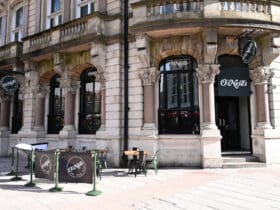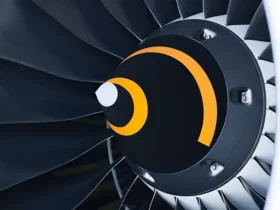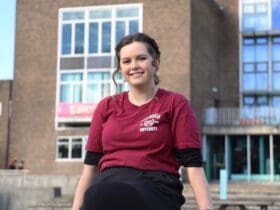A live project at Swansea College of Art involving Surface Pattern Design students will culminate in an exhibition at St Fagans National Museum of History on February 23 and 24.
The students have worked closely with curators at the museum; Mared McAleaveyand Lowri Jenkins, studying, exploring and researching the archives to produce innovative and creative work. It is the first collaboration of its kind between the museum and a University and at the end of next month, the students will get the opportunity to showcase their talents to staff and museum visitors.
Georgia Mckie, Programme Director, BA (Hons) Surface Pattern Design at UWTSD Swansea said: “We are so lucky to have the cultural wealth of the National Museums of Wales at our finger tips. The opportunities for our students to explore and research are endless. These resources are highly valued as a teaching and learning mechanism for our programme team; enabling the students to learn how to research from primary sources – inviting them to respond in personal and nuanced ways. Year on year we find new ways to conjure up drawing trips and projects across the museum portfolio.”
So far this academic year, students from the Surface Pattern Design programme have undertaken exhibition projects with 3 different museums in the portfolio. Georgia added: “To experience these opportunities as soon as in your first year of undergraduate study is such a privilege for our students, and something we feel central to the ethos of the Surface Pattern programme.
“When we first started planning the St Fagans project, only in our wildest dreams did we imagine students would be exhibiting their design work in the many houses, buildings and galleries around the site. Working with the curators has been such an enjoyable experience – their generosity, expertise and openness has been incredible.
“With live briefs such as this we work with the students in a spirit of we are ‘in this together.’ We learn ‘live’ with them – demonstrative in our problem solving, adapting to changing situations as they arise, but always focussed on the creative impetus at the heart of the project. It is important to build resilience in our designers and makers of the future. Learning to liaise with professionalism, accepting client or partners’ needs are vital experiences that we introduce them to early on in their careers. They experience working together as a team, working with staff, working with external parties – their creativity is stretched, their communication skills are enhanced, their confidence is boosted, their employability is heightened.”
Julia Griffiths Jones, Senior Lecturer Surface Pattern Design, First Year tutor, came up with the idea for the live project brief – called “Reimagining the Archive” to coincide with the opening of new study facilities at St Fagans. She was also commissioned to make a piece of work that will be permanently housed in the “Gweithdy” which represents makers and crafts of Wales.


First year Surface Pattern Design student Cerys Davies said: “I worked with love spoons. It started with a simple object, but through my research, I was able to design and explore so many different outcomes. It was so amazing to be able to work with Welsh culture and heritage in this way. I felt so privileged to have the access we had. It’s not something many people get to do and to do be able to do in Wales, where I was born and live, was even more special. A live project like this is so important and exciting. Being able to work so closely with the curators, our lecturers and each other, opened up so many new ways to be creative.”


Third year Surface Pattern Design student Georgia Amman, who is setting up her own business in fashion and surface pattern design, based in Tenby and Newport, said: “Creativity is one of the most important characteristics of being human. This live project gave me much more creative freedom. I was able to work with and research the archives and having access to all this made all the difference to me. It was inspiring and also gave me a wonderful opportunity to showcase my entire skillset. I’m glad I had the opportunity to ignite something special in this way. My work was inspired by the letters sent home by local soldiers’. I wanted to find a unique way of bringing them to life.”
St Fagans has a special place in the hearts of the people of Wales. It first opened its gates to the public on 1 July 1948. It was the UK’s first national open air museum and was radical in its day because it reflected the everyday lives of ordinary people. Since then, it has become Wales’ most popular heritage visitor attraction showcasing historic buildings relocated from across Wales, including a farm, a tannery, mills and a chapel.
Principal Curator Mared McAleavey said: “We were delighted to host the students back in October, when we got out a selection of objects from our collection for them to work with. It’s been fantastic to watch the students develop and be inspired from things we see on a daily basis here at St Fagans. They have succeeded in bringing them to life with a new twist. It’s the first time we have worked with a university in this way and we will definitely be doing this again. We cannot wait to see the students back at St Fagans, exhibiting. It will be lovely for our visitors to also see how the students have been inspired. We are so proud to be able to inspire the next generation of welsh artists in this way.”
Julia said: “During the summer of 2018 I was working on a commission for the new Gweithdy building at St Fagans. Whilst researching there, I was shown the newly finished study facilities for accessing the archives. It was suggested to me that students could view any part of their vast collection in more depth. This was too exciting a prospect to turn down. Archives are repositories of the past which contain ideas for the future. We challenged the students to deconstruct these objects and remake them using the broad range of materials and techniques available to them on the Surface Pattern Design course.”
Georgia added: “The Surface Pattern Design programme at Swansea College of Art is 20 years old this academic year – the same age as a core of our students! This feels like a fitting project to factor in to our 20th year. As with Reimagining the Archive we will reflect on the successes of Surface Pattern Design past but ensure always to look forward, designing the future through the creativity and entrepreneurialism of our students. Designers of our future.”







Leave a Reply
View Comments